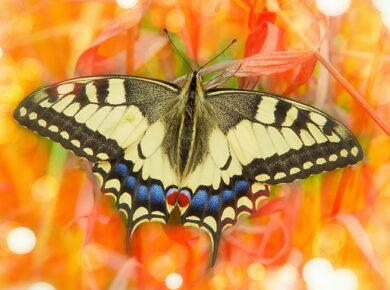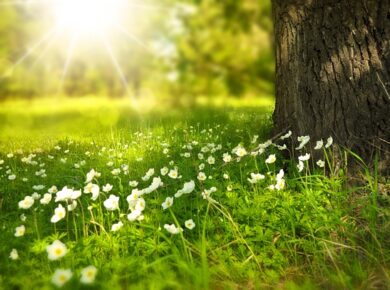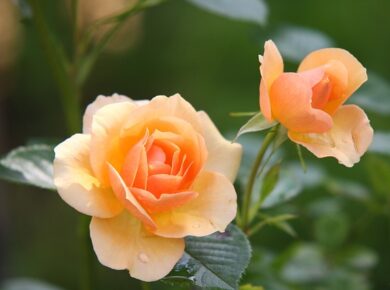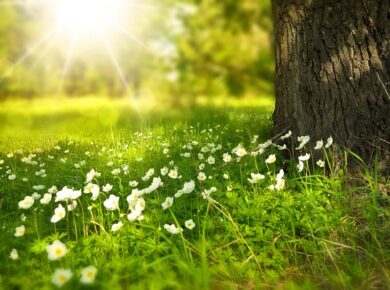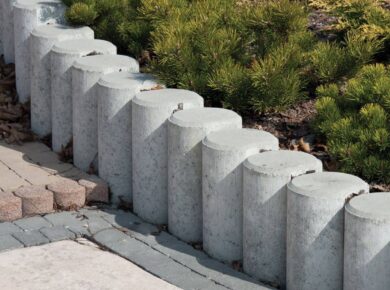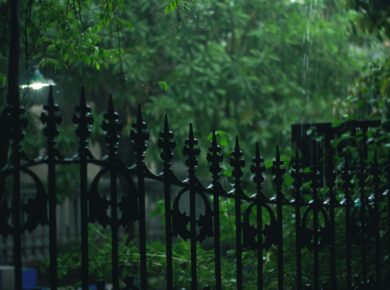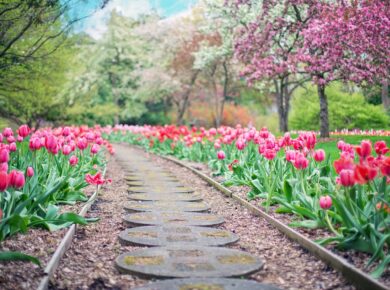Characteristics of Cordyline Red Star: A Stunning Foliage Plant
Cordyline Red Star is a stunning foliage plant that is known for its vibrant red leaves and unique architectural shape. This plant is a popular choice among gardeners and plant enthusiasts due to its striking appearance and easy care requirements. In this article, we will explore the characteristics of Cordyline Red Star and why it is a great addition to any garden or indoor space.
One of the most notable features of Cordyline Red Star is its vibrant red leaves. These leaves are long and narrow, resembling a star shape, hence the name „Red Star.” The deep red color of the leaves adds a pop of color to any garden or indoor space, making it a focal point and conversation starter. The leaves are also slightly arching, giving the plant a graceful and elegant look.
In addition to its stunning foliage, Cordyline Red Star is also known for its unique architectural shape. The plant grows in a rosette form, with the leaves radiating from a central point. This creates a visually appealing and symmetrical look, making it a great choice for adding structure and interest to any garden or landscape design.
Another characteristic of Cordyline Red Star is its versatility. This plant can thrive in a variety of conditions, making it suitable for both indoor and outdoor settings. It can tolerate a wide range of temperatures, from cool to warm, and can adapt to different light levels, although it prefers bright, indirect light. This makes it a great choice for those who are new to gardening or have limited gardening experience.
Cordyline Red Star is also a low-maintenance plant, which is another reason why it is so popular among gardeners. It requires minimal watering and can tolerate periods of drought, making it a great choice for those who have a busy lifestyle or tend to forget to water their plants. However, it is important to note that while this plant is relatively easy to care for, it still requires some attention and regular maintenance to thrive.
To keep Cordyline Red Star looking its best, it is recommended to prune any dead or damaged leaves regularly. This will not only improve the plant’s appearance but also promote new growth. Additionally, it is important to fertilize the plant every few months to provide it with the necessary nutrients for healthy growth.
In conclusion, Cordyline Red Star is a stunning foliage plant that is known for its vibrant red leaves and unique architectural shape. It is a versatile and low-maintenance plant that can thrive in a variety of conditions, making it a great choice for both indoor and outdoor spaces. Whether you are a seasoned gardener or a beginner, Cordyline Red Star is sure to add a touch of elegance and beauty to your garden or indoor space. So why not consider adding this stunning plant to your collection?
Growing and Care Tips for Cordyline Red Star: A Guide for Plant Enthusiasts
Cordyline Red Star, also known as the Red Star Dracaena, is a stunning plant that can add a touch of elegance to any garden or indoor space. With its vibrant red leaves and unique shape, it is no wonder that this plant has become a favorite among plant enthusiasts. In this article, we will provide you with some growing and care tips for Cordyline Red Star, so you can enjoy its beauty for years to come.
First and foremost, it is important to choose the right location for your Cordyline Red Star. This plant thrives in bright, indirect light, so placing it near a window or in a well-lit room is ideal. However, be sure to avoid direct sunlight, as it can scorch the leaves. Additionally, Cordyline Red Star prefers temperatures between 60-80°F (15-27°C), so keep it away from drafts or extreme temperature changes.
When it comes to watering, Cordyline Red Star prefers to be kept slightly moist but not overly wet. It is best to water the plant when the top inch of soil feels dry to the touch. Be sure to water thoroughly, allowing the water to drain out of the bottom of the pot. Overwatering can lead to root rot, so it is important to strike a balance and not let the plant sit in standing water.
In terms of soil, Cordyline Red Star prefers a well-draining potting mix. You can use a mixture of peat moss, perlite, and sand to create a suitable growing medium. This will ensure that excess water can easily drain away, preventing root rot.
Fertilizing your Cordyline Red Star is also important for its overall health and growth. During the growing season, which typically occurs in spring and summer, you can use a balanced liquid fertilizer every two weeks. However, be sure to dilute the fertilizer to half the recommended strength to avoid burning the plant’s roots. In the winter months, you can reduce the frequency of fertilizing to once a month.
Pruning is not necessary for Cordyline Red Star, but you can remove any dead or yellowing leaves to maintain its appearance. Additionally, if the plant becomes too tall or leggy, you can trim the top portion to encourage branching and a more compact growth habit.
Pests are not a major concern for Cordyline Red Star, but it is always a good idea to keep an eye out for common houseplant pests such as spider mites or mealybugs. If you notice any signs of infestation, you can treat the plant with an insecticidal soap or neem oil spray.
In conclusion, Cordyline Red Star is a beautiful plant that can thrive both indoors and outdoors. By providing it with the right amount of light, water, and nutrients, you can enjoy its vibrant red leaves and unique shape for years to come. Remember to choose a suitable location, water it properly, use well-draining soil, fertilize regularly, and keep an eye out for pests. With these growing and care tips, you can successfully cultivate Cordyline Red Star and enhance the beauty of your garden or indoor space.
Enhance Your Garden with Cordyline Red Star: A Perfect Addition to Any Landscape
Cordyline Red Star is a stunning plant that can enhance the beauty of any garden. With its vibrant red leaves and unique shape, it is a perfect addition to any landscape. Whether you have a small backyard or a large garden, this plant will surely catch the attention of anyone who sees it.
One of the great things about Cordyline Red Star is its versatility. It can be planted in various locations, such as flower beds, borders, or even in containers. This means that no matter the size or layout of your garden, you can easily incorporate this plant into your design.
Not only is Cordyline Red Star visually appealing, but it also requires minimal maintenance. It is a hardy plant that can withstand different weather conditions, making it suitable for both indoor and outdoor settings. Whether you live in a hot and dry climate or a cold and wet one, this plant will thrive and continue to add beauty to your garden.
Another advantage of Cordyline Red Star is its ability to attract wildlife. The vibrant red leaves and unique shape of this plant make it a favorite among birds and butterflies. By planting this in your garden, you can create a welcoming environment for these creatures, adding even more life and color to your outdoor space.
In addition to its visual appeal and low maintenance requirements, Cordyline Red Star also offers health benefits. Like other plants, it helps to purify the air by removing toxins and releasing oxygen. This can contribute to a healthier and more pleasant environment for you and your family.
When it comes to planting Cordyline Red Star, there are a few things to keep in mind. It prefers well-drained soil and partial shade, although it can tolerate full sun as well. It is important to water it regularly, especially during dry spells, to ensure its optimal growth. Additionally, pruning any dead or damaged leaves will help to maintain its overall appearance.
In conclusion, Cordyline Red Star is a perfect addition to any garden. Its vibrant red leaves, unique shape, and versatility make it a standout plant that can enhance the beauty of any landscape. With its low maintenance requirements and ability to attract wildlife, it is a great choice for both experienced gardeners and beginners. So why not consider adding Cordyline Red Star to your garden and enjoy its beauty for years to come?
Cordyline Red Star: A Versatile Plant for Indoor and Outdoor Spaces
Cordyline Red Star: A Versatile Plant for Indoor and Outdoor Spaces
Cordyline Red Star is a stunning plant that can add a touch of elegance to both indoor and outdoor spaces. With its vibrant red leaves and unique architectural form, it is no wonder that this plant has become a favorite among gardeners and plant enthusiasts.
One of the great things about Cordyline Red Star is its versatility. It can thrive in a variety of environments, making it suitable for both indoor and outdoor cultivation. Whether you have a sunny balcony, a shady corner in your garden, or a well-lit living room, this plant can adapt and thrive.
Indoors, Cordyline Red Star can be a beautiful addition to any room. Its striking red leaves can provide a pop of color and create a focal point in your space. It can be placed in a decorative pot and displayed on a table or shelf, or it can be used as a floor plant to add height and drama to a room. With its upright growth habit, it can also be a great choice for filling empty corners or adding structure to a space.
Outdoors, Cordyline Red Star can be used in a variety of ways. It can be planted in containers and placed on a patio or balcony, adding a touch of tropical flair to your outdoor living area. It can also be used as a border plant, creating a striking contrast against green foliage. Additionally, it can be planted in groups to create a bold statement or used as a focal point in a garden bed.
One of the reasons why Cordyline Red Star is so popular is its low maintenance requirements. It is a relatively easy plant to care for, making it suitable for both experienced gardeners and beginners. It prefers well-draining soil and requires regular watering, especially during hot summer months. However, it is important not to overwater the plant, as this can lead to root rot. It is also important to provide the plant with adequate sunlight, whether it is placed indoors or outdoors.
Another great feature of Cordyline Red Star is its ability to attract wildlife. The plant’s vibrant red leaves can attract butterflies and hummingbirds, adding a touch of life and movement to your garden. This can be especially enjoyable if you have a passion for wildlife and want to create a welcoming environment for these creatures.
In conclusion, Cordyline Red Star is a versatile plant that can be a beautiful addition to both indoor and outdoor spaces. Its vibrant red leaves and unique architectural form make it a standout choice for any garden or living space. Whether you choose to display it indoors or plant it in your garden, this plant is sure to add a touch of elegance and beauty to your surroundings. With its low maintenance requirements and ability to attract wildlife, it is a great choice for both experienced gardeners and beginners alike. So why not consider adding Cordyline Red Star to your collection of plants? You won’t be disappointed!
Frequently Asked Questions about Cordyline Red Star: Everything You Need to Know
Cordyline Red Star, also known as the Red Star Dracaena, is a popular plant among gardening enthusiasts. Its vibrant red leaves and unique shape make it a standout addition to any garden or indoor space. However, many people have questions about this plant and how to care for it. In this article, we will answer some frequently asked questions about Cordyline Red Star, providing you with everything you need to know.
One common question is, „How tall does Cordyline Red Star grow?” Cordyline Red Star can reach a height of about 3 to 5 feet, making it a great choice for both indoor and outdoor spaces. Its compact size allows it to fit nicely in smaller areas, such as on a patio or in a living room.
Another question often asked is, „Does Cordyline Red Star require a lot of sunlight?” Cordyline Red Star thrives in bright, indirect light. While it can tolerate some shade, it is best to place it in a location where it can receive at least a few hours of sunlight each day. If you are growing it indoors, placing it near a window that receives indirect sunlight is ideal.
Many people also wonder about the watering needs of Cordyline Red Star. It is important to keep the soil consistently moist but not overly saturated. Watering once a week is usually sufficient, but you should adjust the frequency based on the moisture level of the soil. It is always a good idea to check the top inch of soil before watering to ensure it is dry.
A frequently asked question is, „How often should I fertilize Cordyline Red Star?” Cordyline Red Star benefits from regular fertilization during the growing season, which is typically spring and summer. Using a balanced, water-soluble fertilizer once a month is recommended. Be sure to follow the instructions on the fertilizer packaging for the correct dosage.
Another common concern is, „How do I propagate Cordyline Red Star?” Propagating Cordyline Red Star can be done through stem cuttings. Simply cut a healthy stem from the plant, remove the lower leaves, and place it in a pot with well-draining soil. Keep the soil moist and place the pot in a warm, bright location. Roots should start to develop within a few weeks.
Lastly, people often ask, „Is Cordyline Red Star toxic to pets?” Unfortunately, Cordyline Red Star is toxic to cats and dogs if ingested. It contains saponins, which can cause vomiting, diarrhea, and other gastrointestinal issues. It is important to keep this plant out of reach of pets or opt for pet-friendly alternatives.
In conclusion, Cordyline Red Star is a stunning plant that can add a pop of color to any space. It requires bright, indirect light, regular watering, and fertilization during the growing season. Propagation can be done through stem cuttings, and it is important to keep this plant away from pets due to its toxicity. By following these guidelines, you can enjoy the beauty of Cordyline Red Star in your home or garden.
Pytania i odpowiedzi
1. Jakie są wymagania dotyczące oświetlenia dla Cordyline Red Star?
Odpowiedź: Cordyline Red Star preferuje jasne, ale rozproszone światło. Najlepiej rośnie w miejscach o umiarkowanym nasłonecznieniu.
2. Jak często należy podlewać Cordyline Red Star?
Odpowiedź: Cordyline Red Star wymaga regularnego podlewania, ale należy unikać nadmiernego namaczania gleby. Podlewanie powinno być umiarkowane i dostosowane do warunków pogodowych.
3. Jakie są zalecane temperatury dla Cordyline Red Star?
Odpowiedź: Cordyline Red Star najlepiej rośnie w temperaturze między 18 a 24 stopni Celsjusza. Należy unikać skrajnych temperatur i gwałtownych zmian.
4. Jak często należy nawozić Cordyline Red Star?
Odpowiedź: Cordyline Red Star należy nawozić raz na miesiąc w okresie od wiosny do jesieni. Zaleca się stosowanie nawozu o niskiej zawartości azotu.
5. Jakie są zalecane warunki glebowe dla Cordyline Red Star?
Odpowiedź: Cordyline Red Star najlepiej rośnie w dobrze przepuszczalnej glebie o odczynie lekko kwasowym do lekko zasadowego. Gleba powinna być bogata w składniki odżywcze i dobrze drenowana.
